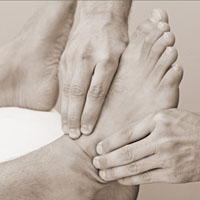Frequently asked questions
Does Rolfing help back pain?
Most of my clients with back pain receive significant relief from our work together. In fact, 50% of my clients come to me initially for relief from back pain. Of course, back pain isn’t always just structural—stress and dietary issues, for example, can play major roles as well, and I often work with clients on those areas, too.
Can Rolfing cure arthritis?
No. But many of my clients with arthritis get symptomatic relief from working with me. Because if a joint is inflamed or has calcification, decompressing that joint is obviously going to feel better. Also, the pain of arthritis often creates chronic holding and “locking up” in neighboring muscles, and those can become their own sources of pain. Rolfing helps release them.
Can Rolfing help scoliosis?
Absolutely. It can lessen the curvature and rotation, sometimes significantly, reduce tightness and pain associated with it, and it can allow you to have more ease and fluidity around your curvatures.
Can Rolfing help sciatica?
Rolfing quite often gives people significant relief from sciatica. The sciatic nerve passes through the piriformis muscle and the hamstrings, and by softening and lengthening these myofascial structures (and sometimes attending to rotations in the femurs and/or fixations of the sacrum), my clients’ sciatic pain frequently vanishes.
Does Rolfing help plantar fasciitis?
Quite commonly, yes. The process often requires lengthening and “freeing up” the tissues, not just in the sole of the foot (the plantar fascia) but all the way up the calf and even into the hamstrings.
Can Rolfing make you taller?
It depends entirely on the individual, but it certainly happens, occasionally by as much as 2 inches!

